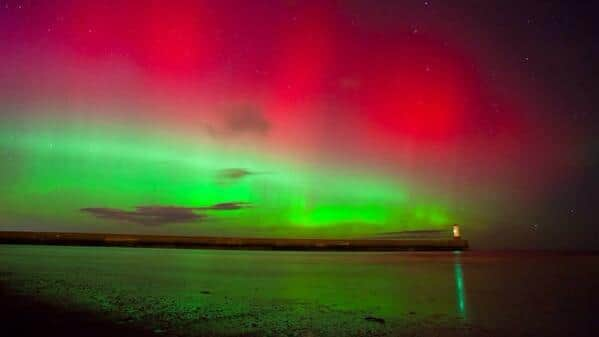Northern Lights to dazzle in Scottish skies tonight in solar storm lightshow
Solar storms occur when the sun emits huge bursts of energy in the form of solar flares – some as powerful as billions of nuclear bombs – which then send forth a stream of electrical charges and magnetic fields toward the Earth at speeds of around three million miles per hour.
At the moment one of these solar flares is hurtling towards the Earth and could lead to a rare opportunity for people to view the Northern Lights – also known as the Aurora Borealis – in the skies above Scotland on Sunday night.


Advertisement
Hide AdAdvertisement
Hide AdThe flare is expected to produce geomagnetic storms when it hits our planet late on Sunday or early Monday morning, making it possible to spot the spectacular sight – and cloud cover is forecast as relatively minimal overnight, making it even easier to catch the light show.
According to the Met Office, satellite images showed the flare – also known as a coronal mass ejection, or CME – leaving the sun on Saturday.
The Met Office stated: “The large CME has been analysed and is expected to have an Earth directed component, which is expected to arrive either late on March 13 or early March 14.”
Warnings have been issued the storm could interfere with amateur radio and GPS systems, which are most likely to be affected near dawn and dusk.
A message from the Editor:
Thank you for reading this article. We're more reliant on your support than ever as the shift in consumer habits brought about by coronavirus impacts our advertisers.
If you haven't already, please consider supporting our trusted, fact-checked journalism by taking out a digital subscription.
Comments
Want to join the conversation? Please or to comment on this article.
